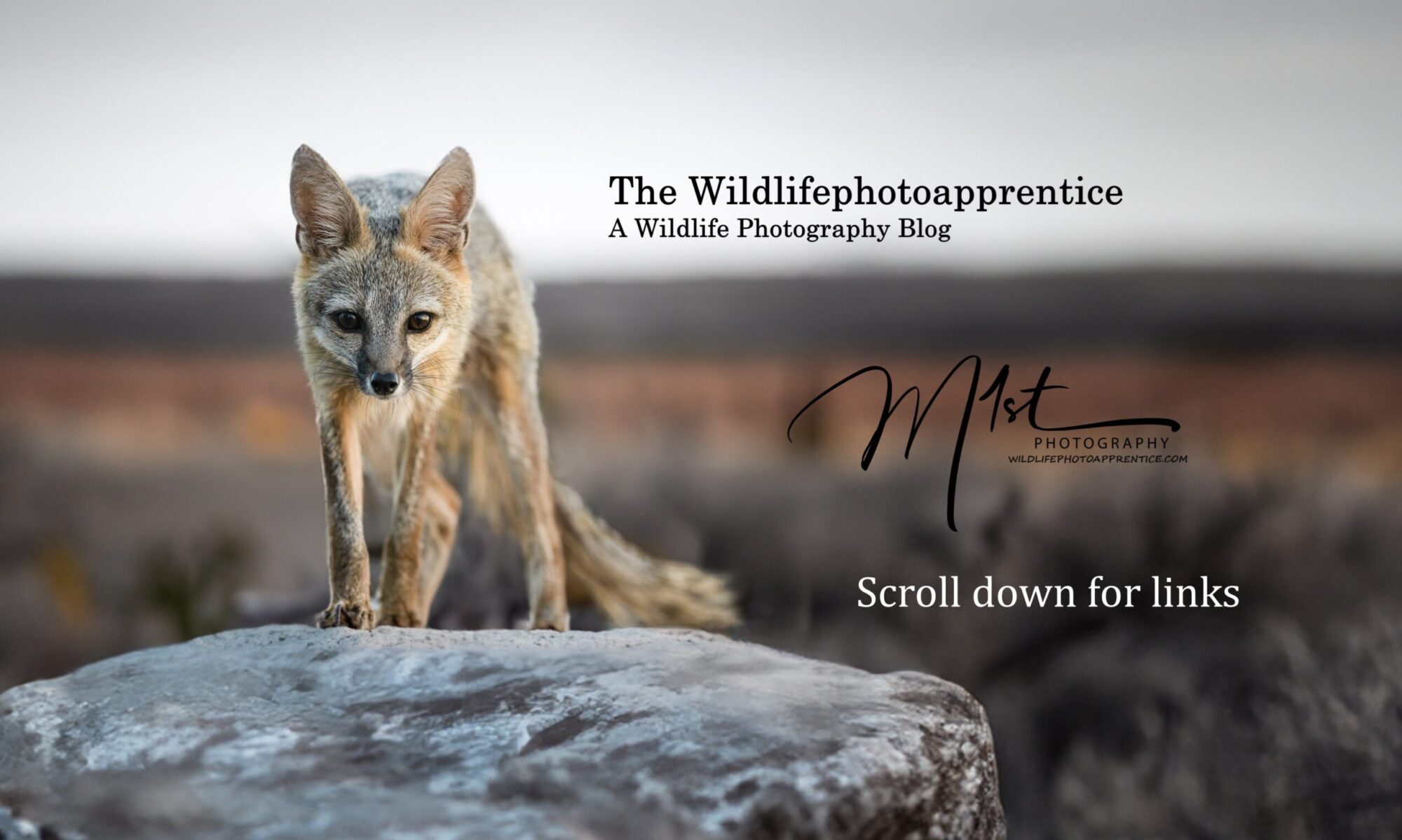Paul Simon wrote the 59th street bridge song, (feeling groovy) in 1966. The song starts with the lyrics, “slow down your moving to fast, you got to make the morning last”. I think of that song often and the message it was trying to send. It applies to every aspect of our lives. Nowadays we all have more to do than we have time to do it. One of the reasons I picked up a camera in the first place was to force me to slow down and see the world in a different light, so to speak. It’s never more important to slow down than when trying to photograph wildlife. Nature works on it’s own time, and it’s not in a hurry. I think a Chinese philosopher said that, or something like it. Anyway, slow down. Nature rewards the patient photographer.
I went out to our local wildlife preserve this morning as I usually do on the weekends to see what I could find to photograph. It’s about 110 acres of brush and trees with a small playa lake in the middle. Because water is at a premium in West Texas, the preserve manages to attract a large variety of wildlife in spite of its’ small size. Due to its’ uniqueness it also manages to attract a large number of people. The preserve has a trail system that winds in a large loop around the property through several different areas of varied vegetation. The loop is approximately 1.5 miles in length. Half the time I choose to slowly walk the trail observing wildlife. The other half of the time I choose a place to conceal myself, stand quietly where the light is good, and let the wild things come to me. Both are equally productive at different times. The key is to walk slowly or not at all and be observant of your surroundings. Listen to the sounds around you. The chatter of a king fisher, the screech of a hawk, the rustle of the bushes as a raccoon forages along the bank.
Today I arrived early at sunrise. The temperature was 29 degrees. The sky was pink from the sun reflecting off a layer of high wispy clouds. Today, I thought to myself, would be a stand and watch what happens day. I chose a concealed area next to the edge of the playa with the sun at my back to ensure good lighting. I checked my camera settings to ensure I had the correct ISO, F-stop, and shutter speed to get correct exposure. Then I waited. Within minutes I heard the sound of a king fisher and noticed he had set up for his morning of fishing in a tree about 75 yards away. He didn’t seem to know I was there, perfect.
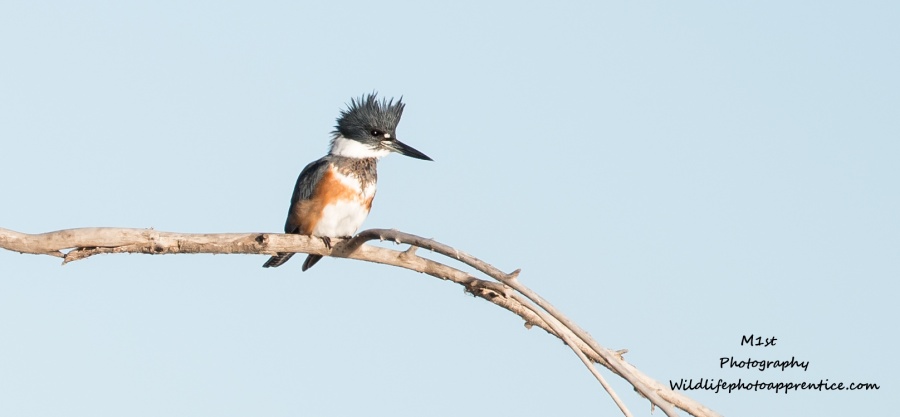
I watched as he repeatedly dove for minnows below. Some times successful, sometimes not.
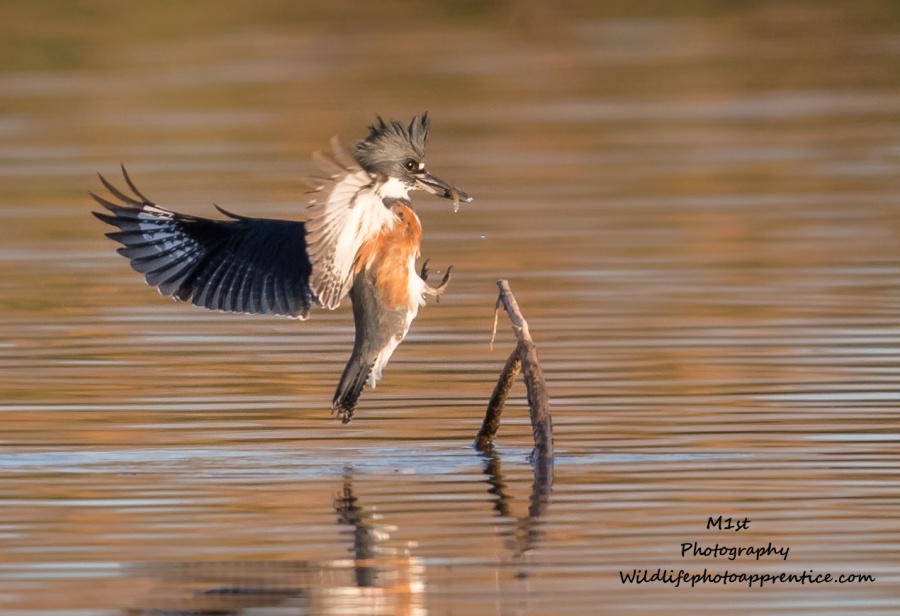
What he didn’t notice was that while he was busy gathering his own breakfast, something else was looking to have him for breakfast. A Coopers Hawk had flown into the tree behind his perch and was now taking aim at him. As we discussed in a previous post, Coopers Hawks prey on other birds. The hunter had become the hunted.
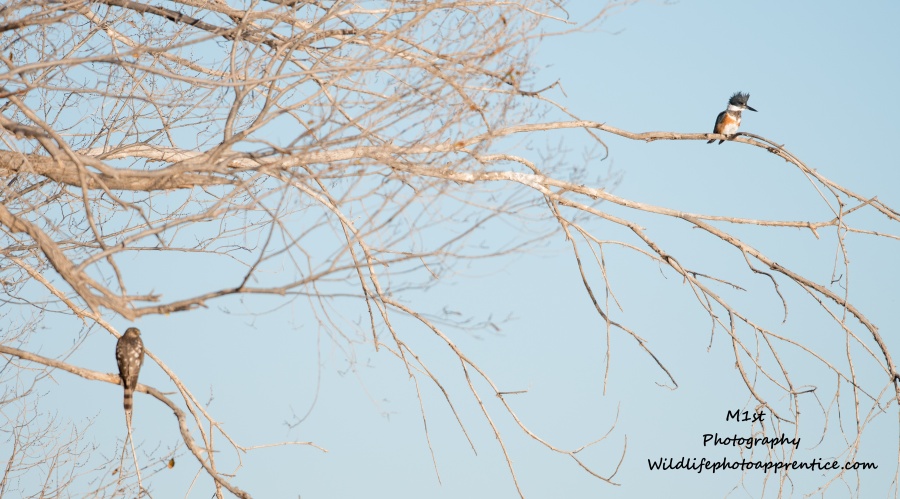
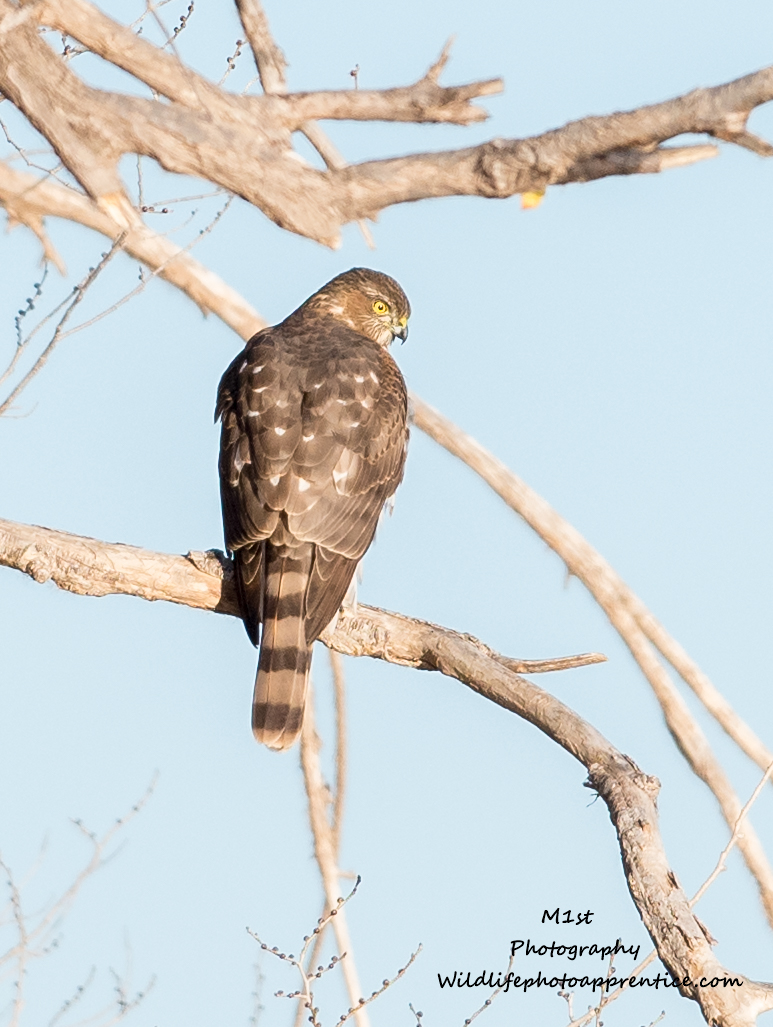
Ah, the circle of life. The king fisher dove for another fish, but when he did the hawk flew after him in hot pursuit. Like two fighter pilots locked in a dogfight they flew, one on the others tail.
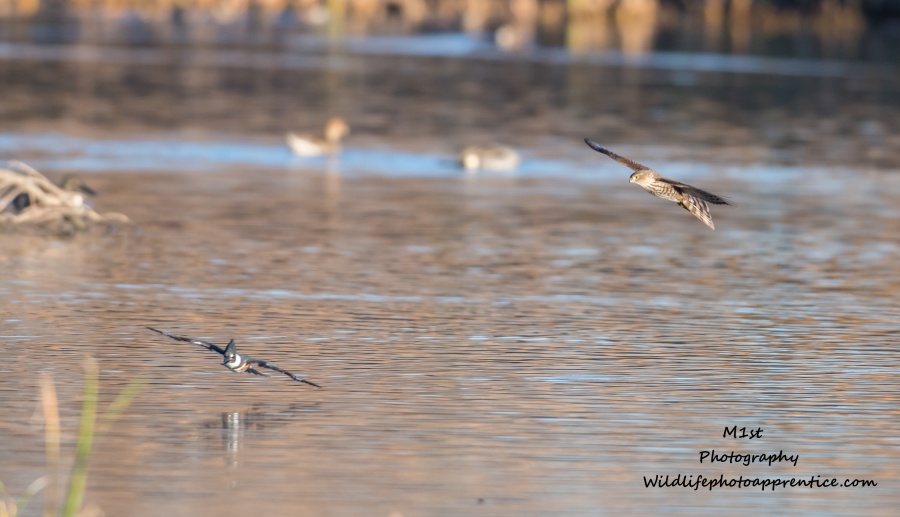
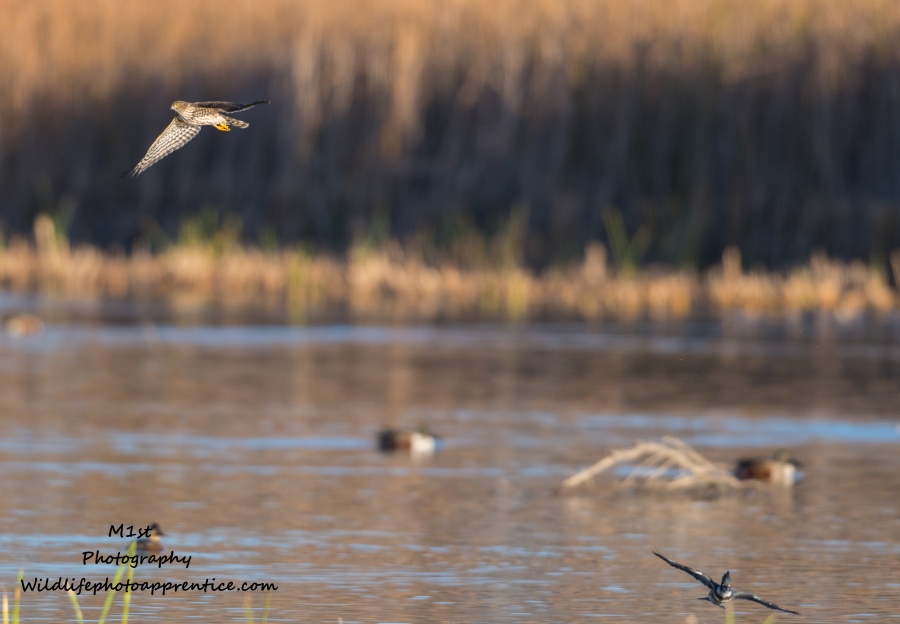
For about thirty minutes the hawk and king fisher played cat and mouse, the king fisher always just one step ahead of the hawk. The fisher flies into the tree, and the hawk follows.
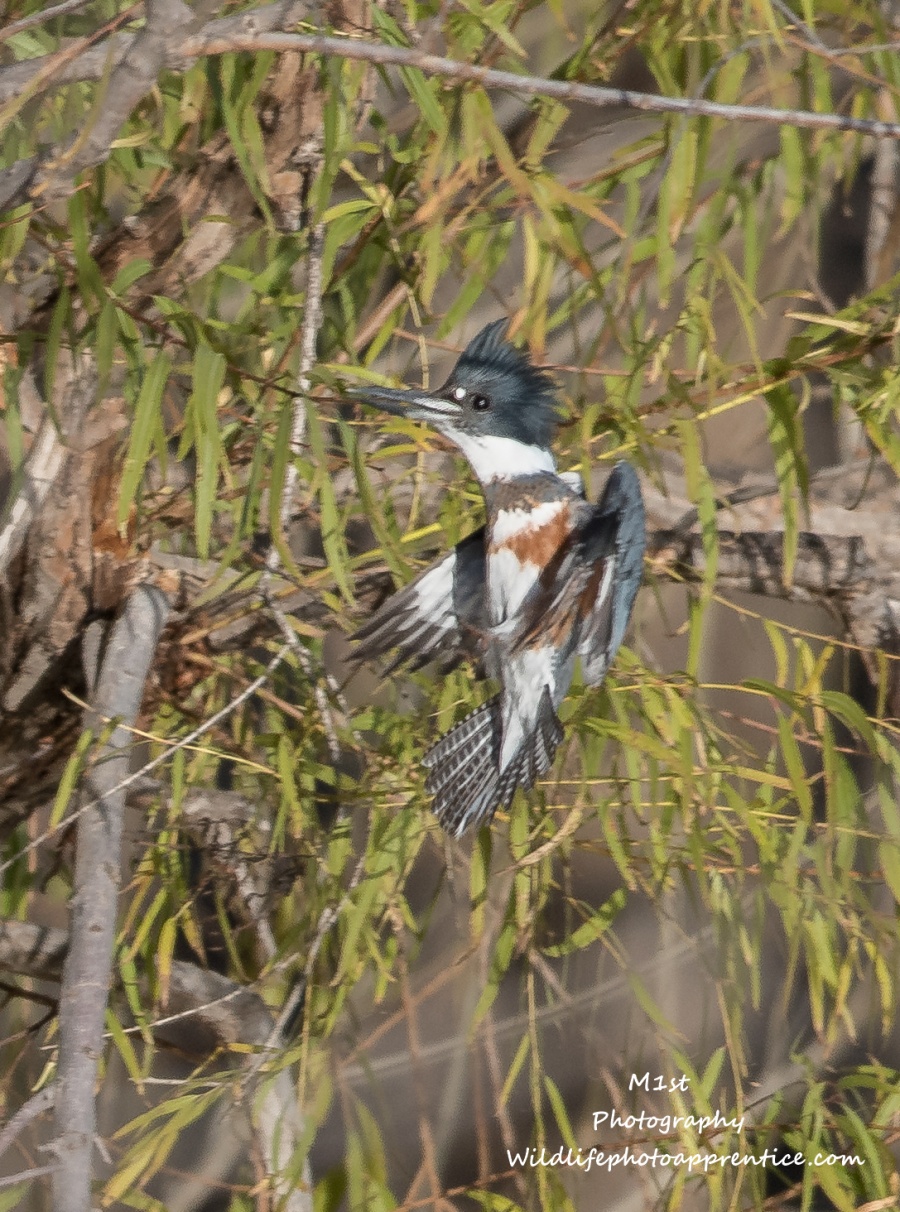
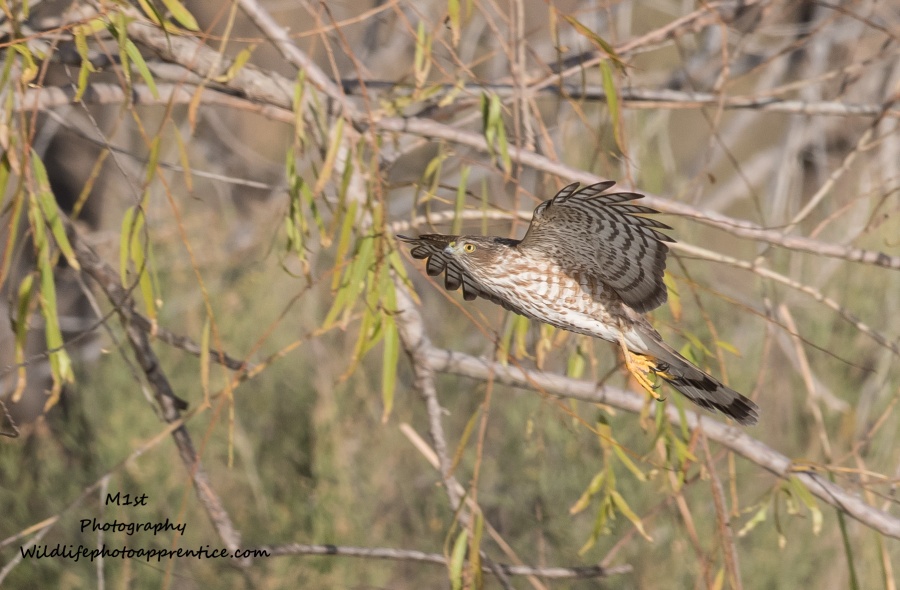
Eventually the hawk grew weary of his unsuccessful chase and disengaged to find other opportunities for breakfast.
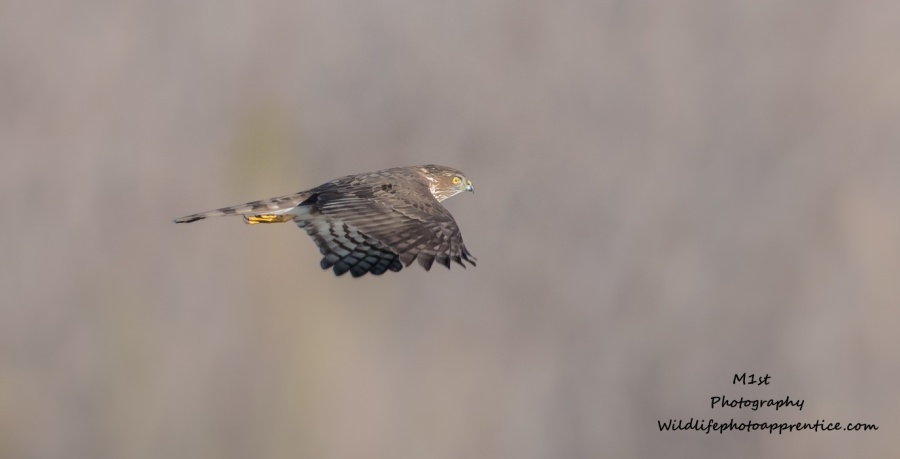
The fisher returned to fishing.
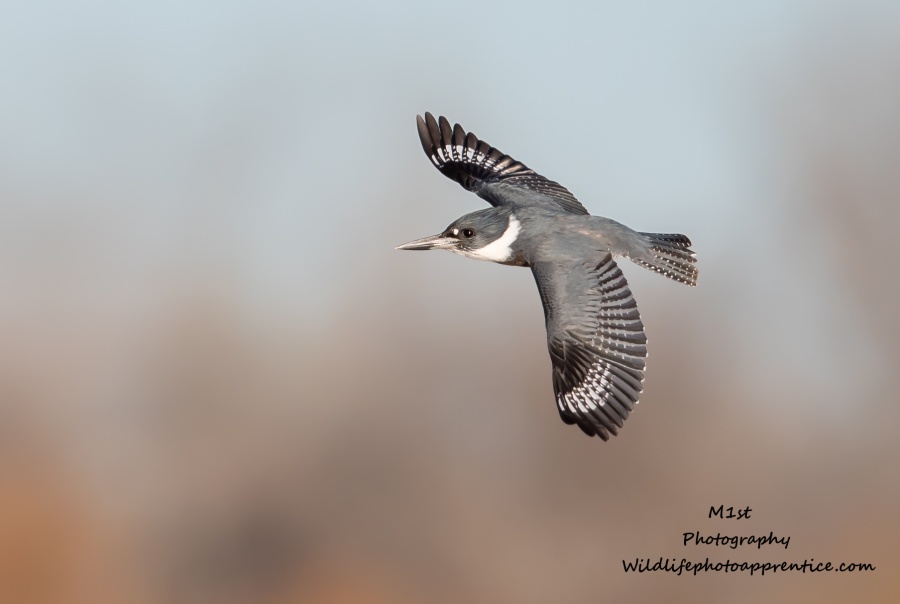
The entire experience was fascinating to watch, exciting, and an opportunity to get some great photos of two interesting birds interacting in what is the day to day struggle to stay alive in nature.
As I was leaving, a family with children were leaving as well. As I walked by I couldn’t help but overhear the disappointment in the children’s voices as they lamented the fact that they had not seen any animals. The parents sounded equally disappointed in there response. I think most people regard the place as a zoo and think that with little effort, they should be rewarded with animals around every turn. This is the mindset of many would be wildlife photographers as well. This morning during the same time that family must have been noisily trudging around the trail oblivious to the wildlife around them, I sat quietly along the edge of the playa and saw a hawk and a king fisher in a life and death struggle. The family never even knew it took place just a few feet away from them. To become a good wildlife photographer you must first become a good observer. You must slow down. Use all your senses. You must understand that you can look, but not see. To become a good wildlife photographer you must learn to see. When you slow down and learn to see, like the song says, you’ll start feeling groovy.
